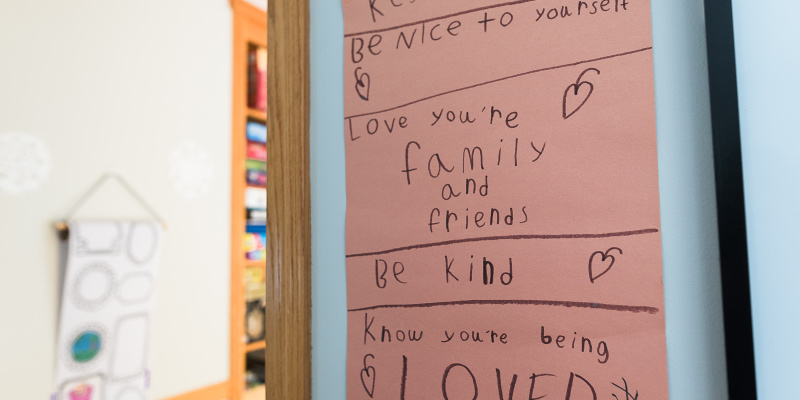

BOOK STUDY: Uniquely Human
A Different Way of Seeing Autism
Uniquely Human by Barry M. Prizant approx. $14.99 on Amazon
Since this book is for gifted professional development, many principals have funds that they can use to order the book for you with a purchase order. Check with your building principal before purchasing!
Part One: Understanding Autism
Now through November 2nd - Zoom 4pm
- Purchase the book and begin reading through page 146.
- I am particularly inspired by non-speaking autistic graduate Elizabeth Bonkers. Please watch her May 2022 high school valedictorian address here: BE THE LIGHT
- Consider Listening to an episode of Uniquely Human: The Podcast
Elizabeth is founder of "Communication 4 All", an advocacy organization that aims to bring communication to all autistic non-speakers, an estimated 31 million people worldwide.
SUGGESTION:
In Uniquely Human: The Podcast Episode 86 , Barry Prizant interviews Elizabeth about her advocacy organization and participation in the award-winning documentary "Spellers", available for $10 On Demand until December 30th.
Prepare for the Zoom discussion by reflecting on these questions as you read chapters 1-6:
Chapter 1: Ask "Why?"
Why does my student ______? Is this a strategy of communication while experiencing dysregulation? Are any student plans centered on compliance goals rather than fostering positive communication goals? Am I or my reactions a source of dysregulation for students?
Chapter 2: Listen
Think about students who may have quoted shows or films, or blurted seemingly random phrases in class. Reframe your response to these "behaviors" as a student's effort to use echoes or scripts to communicate or cope. What may your student have been trying to convey? What emotion or understanding was he or she trying to share? What were some strategies used to help students move toward more self-created language?
Chapter: 3 Enthusiasms
Do you have as student with a strong passion or interest? Pay attention to the emotions and the environment when he/she becomes engrossed in the topic. Is there an underlying motivation for the child's behavior? How might you use that enthusiasm to promote engagement and interest in your classroom?
Chapter 4: Trust, Fear and Control
"The opposite of anxiety isn't calm, it's trust." - Michael John Carley
Think about people you have known on the autism spectrum. Have you observed them face obstacles in the lack of trust in their own bodies? In disruptions in daily routines or expectations? In others?
Discuss the connection between fears, lack of trust, and the need for control or feeling safe. How might this view of dysregulation change your approach with an autistic student?
Chapter 5: Emotional Memory
In order to create more positive (safe and trustworthy) correlations for students who may struggle with certain classes or locations within the school, how might you:
- offer choice (and a sense of control)
- provide a visual support
- address sensory overload
- reduce uncertainty or unpredictability
- use words with positive connotations
- honor the child's strengths, enthusiasms or positive coping strategies
Chapter 6: Social Understanding
How can we reframe or challenge the following misperceptions of people with autism:
- They are rude and too direct.
- They talk only about their interests and don’t shift to topics of interest to you.
- They ask too many questions, and often the same ones over and over
Have you ever experienced social confusion while visiting another culture or in a social setting surrounded by people of an unfamiliar subculture?
What are some suggestions from this chapter for teaching social understanding, social thinking and emotions?
Part Two: Living on the Autism Spectrum
Before November 28th - 4pm Zoom
Prepare for the Zoom discussion by thinking through these questions as you read your chapters 7-10:
Chapter 7: What It Takes to "Get It"
On page 162, a colleague of the author, Shelly Christensen, said, " We must go beyond inclusion to create a sense of belonging so that a person feels valued as a member of a community." How does this statement relate to autistic students in your classroom? What more could you do to help your neurodiverse student feel valued for his strengths or comfortable as a member of your classroom? What qualities of those who "get it" do you want to improve upon?
Chapter 8: Wisdom from the Circle
The author describes in this chapter how raising an autistic child can require a great deal of emotional and physical energy. What are 3 helpful things you can do as a professional to support families on their journey of raising an autistic child?
Chapter 9: The Real Experts
Identify 3 significant "take-aways" you have learned from autistic people from their writings, lectures or from your personal experiences with them.
The motto of the disability advocacy community is "nothing about us without us". Explain the importance of this view when creating intervention plans for autistic students or while stakeholders establish disability policies.
Chapter 10: The Long View
Parents and siblings evolve through many stages from the first understanding that a child is not developing typically through all the transitions that follow into school years and adulthood. How can we as educators be respectful, understanding, and helpful based upon where a family or sibling or autistic child is on their journey of living with autism?
Dr. Stephen Shore and Learn Autism
Consider listening to the 20-minute podcast below with Dr. Stephen Shore (featured in Chapter 10) to hear his suggestions for teachers to take a strength-based approach to support ALL students to reach their unlimited potential. Learn about his "4As of autism" and explore his FREE resource and app for parents and educators, "Learn Autism".
RAISING LIFELONG LEARNERS - blog & podcast focusing on neurodivergent kids
Former gifted intervention specialist Colleen at Raising Lifelong Learners compiles resources related to gifted, neurodivergent, twice-exceptional children for parents and teachers. Podcast #218 below explains sensory challenges some of our students experience and discusses ideas to help kids learn to self-regulate. Be sure to check out the "Links and Resources" after each podcast. Colleen is a wealth of information!
Part Three: The Future of Autism
Before January 16th - 4pm Zoom
Prepare for the Zoom discussion by thinking through these questions as you read your chapters:
Chapter 11: Reframing Autistic Identity
Pages 235-239 present Dr. Stephen Shore's approach for discussing an autism diagnosis with an individual previously unaware over several meetings. How might help you in working with students/families of students not identified but experiencing similar strengths and challenges? What are some commonplace discussions or comments about autism could make today (regardless if you currently have autistic students on your roster) to help build an accepting culture among your colleagues? Among the students in your classroom?
Chapter 12: Giving Back, Leading the Way
For autistic student with strong communicative or intellectual abilities, few would argue that we must include those voices in developing interventions or policy. How can those with few support needs increase your understanding of those with greater communicative needs or with intellectual challenges?
Consider 2 of the 6 individuals profiled in this section. What key take-aways have you gleaned from them and what is most striking to you about their efforts?
Chapter 13: Energize the Spirit
In your experience, what types of activities tend to foster engagement and participation of autistic people and generate positive emotions and experiences? Why is it important to infuse such experiences in the flow of daily life? How should this be balanced with teaching functional life skills?
How can the Fine Arts energize the spirit of all people, not just those on the spectrum? Can you share any examples of innovative activities for autistic people (of any age) that have produced positive results?
EPILOGUE
How can you as an educator help individuals and families find and connect with a community of support? Be sure to check out and/or share the resources listed on pages 319-325.
FAQ - Be sure to read over pages 295-317 for thorough answers to commonly asked questions!
Fall 2023 Broadway Musical debut with autistic cast
The documentary "How to Dance in Ohio" , co-produced with Paula Abdul, is being made into a Broadway musical making it's debut this month!
This is the first time that autistic actors have been cast in all roles calling for autistic characters. The musical is based upon the real-life documentary of "seven autistic young adults at a group counseling center in Columbus, Ohio who prepare for a spring formal dance—a rite of passage that breaks open their routines and sets off hilarious and heartbreaking encounters with love, stress, excitement, and independence."
Watch the documentary here. (HBO Max)



